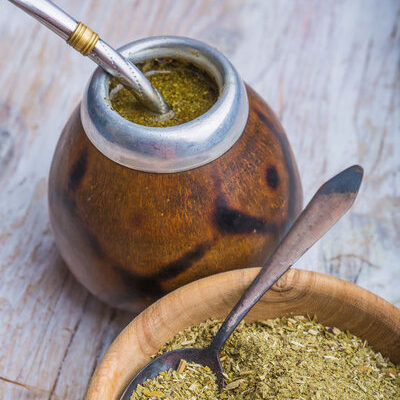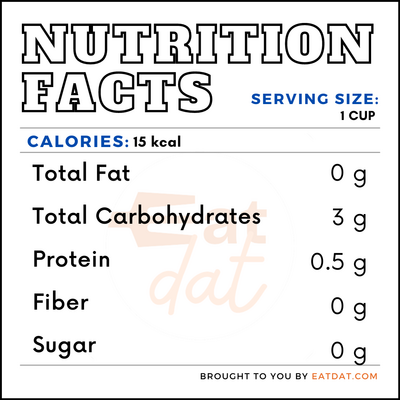
Mate Tea
also known as Yerba Mate
What is Mate Tea?
Mate tea is a beverage made by infusing dried holly (yerba mate) leaves in hot water. It is not actually tea, but a type of herbal tea. However, it does contain caffeine. The drink is of South American origin and is the national beverage of Paraguay, Argentina, and Uruguay.
- Additionally, it is popular in Middle Eastern countries like Syria and Lebanon.
- The drink is considered to be of social importance in South America.
The top 10 most popular mate tea brands are:
- Rosamonte Especial
- Cruz de Malta
- Canarias
- Guayaki
- Taragui Red
- Ximango
- CBSe
- Union Suave
- Anna Park
- Mate Leao
Origin of mate tea
Yerba mate consumption is thought to have originated from southern Brazilian tribes. In the 1500s, Spanish colonization spread this practice throughout South America. In Argentina, the Jesuits built plantations for the crop, which got destroyed after a trade war with Paraguayan farmers. After that, Paraguay stopped growing yerba following the War of the Triple Alliance, leaving Brazil alone to produce the herb. However, in the 1900s, both Argentina and Paraguay started harvesting this crop for mate tea again.
Nutrition
A cup of this tea has around 15 calories. The nutritional values for yerba mate are:

In addition, the herb is rich in antioxidants, magnesium, vitamin C, and zinc. Also, yerba mate contains polyphenols, phytosterols, saponins, some amino acids, vitamins, and minerals. The beverage also contains caffeoyl derivatives, such as caffeic acid, chlorogenic acid, 3,4-Dicaffeoylquinic acid, 4,5-Dicaffeoylquinic acid, and 3,5-Dicaffeoylquinic acid.
Consuming yerba mate on a regular basis has the potential to help reduce body weight and control obesity. Additionally, it can reduce bad cholesterol and the risk of heart diseases and diabetes. However, very high consumption may increase the risk of cancer.
Commercial production
Mate tea is a popular drink throughout South America and is also served in cafés and restaurants. To prepare the infusion, the container is first filled up half or three quarters of the way with the dried yerba leaves and shaken, crushed, or ground. Then, cold water is added to prepare the infusion. A straw is placed in the container and hot water is added. Finally, the infusion is allowed to steep and then served.
The container is traditionally a gourd made of calabash. The tea gets its name from this gourd, which is called mate. Moreover, the straw used with mate tea is often made of metal or bamboo, and is known as a bombilla.
Mate Tea recipes
Traditionally, yerba mate is consumed from a gourd. The person preparing the infusion is the cebador. They prepare a gourd and drink from it, then prepare another round and pass it to the next person, who finishes it and passes it back. This continues until everyone has had a turn drinking the beverage.
Although it is a traditional drink, mate tea lends itself to variations. Here are some recipes to try:
- Yerba Mate
- Yerba Mate Cashew Latte
- Yerba Mate Chocolate Truffles
- Yerba Mate with Coffee
- Caramel Apple Yerba Mate Iced Tea
- Raspberry Lemon Yerba Mate Smoothie Bowl
- Match Bundt Cake
- Chaca Maca Yerba Mate
FDA regulations
The FDA has no standard of identity for mate tea or yerba mate products. However the organization recognizes Ilex paraguariensis leaves used to make mate tea as generally safe. Additionally, the organization outlines the use of this leaf extract in energy drinks, energy bars, beverages and other food items.
References
Compendium of Guidelines for Herbal and Fruit Infusions, Tea and Herbal Infusions Europe, https://www.teeverband.de/files/bilder/Publikationen/Recht/2018-07-17_Compendium_of_Guidelines_for_Herbal_Infusions_-_ISSUE_6.pdf
Gambero, Alessandra, and Marcelo L Ribeiro. “The positive effects of yerba maté (Ilex paraguariensis) in obesity.” Nutrients vol. 7,2 730-50. 22 Jan. 2015, doi:10.3390/nu7020730, https://www.ncbi.nlm.nih.gov/pmc/articles/PMC4344557
Alkhatib, Ahmad, and Roisin Atcheson. “Yerba Maté (Ilex paraguariensis) Metabolic, Satiety, and Mood State Effects at Rest and during Prolonged Exercise.” Nutrients vol. 9,8 882. 15 Aug. 2017, doi:10.3390/nu9080882, https://www.ncbi.nlm.nih.gov/pmc/articles/PMC5579675/
